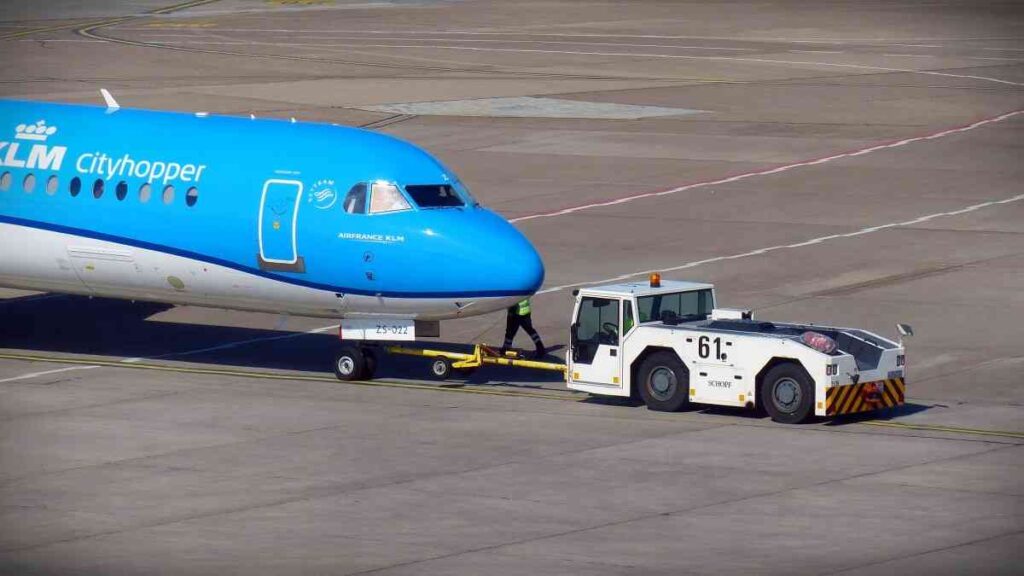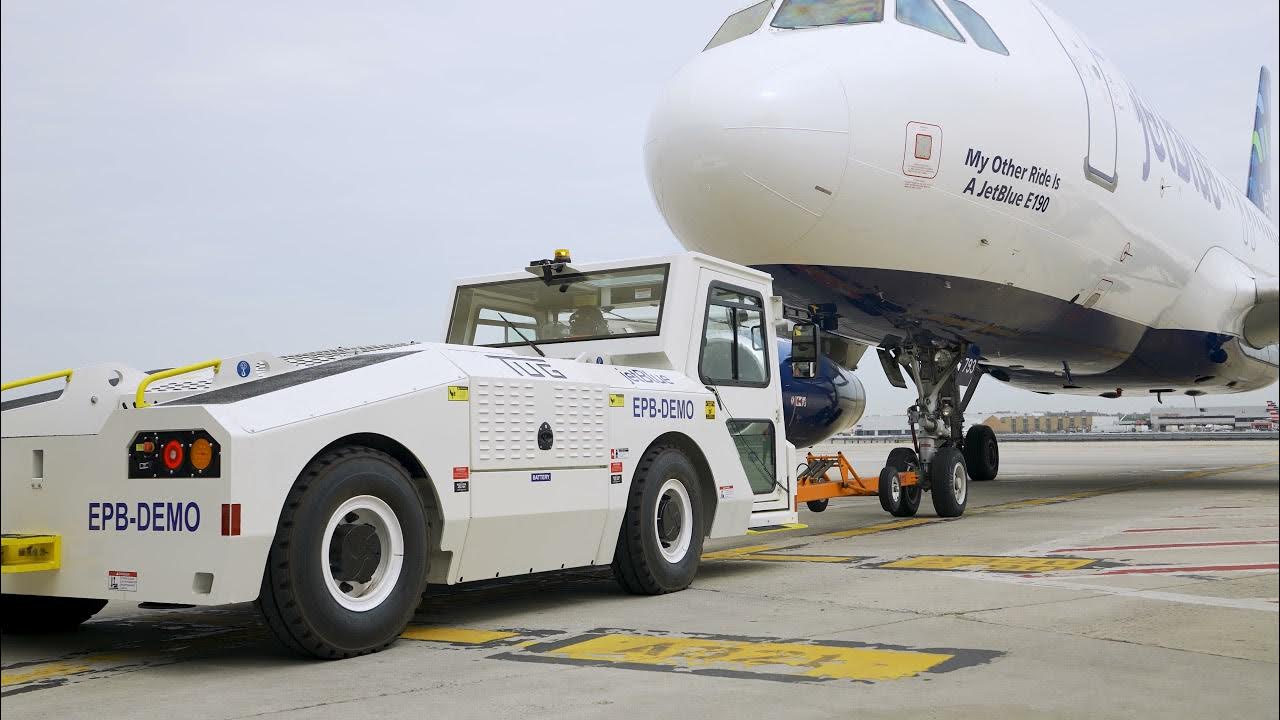Have you ever wondered how those massive airplanes get pushed back from the gate before taking off? It’s all thanks to a nifty piece of equipment called the aircraft pushback tug. In this article, we’ll take a closer look at how these powerful machines work, step by step.
What Is Pushback Tugs
Contents
Ever watched in awe as airplanes effortlessly glide away from the terminal gate, ready to take to the skies? Behind this seamless spectacle lies the silent hero of airport operations: the pushback tug. In this article, we’ll unravel the mystery behind pushback tugs, exploring what they are, how they function, and why they’re indispensable to the smooth operation of airports worldwide.

What Are Pushback Tugs?
Pushback tugs, also known as aircraft tugs or tow tractors, are specialized vehicles designed to move aircraft away from the gate and position them for taxiing. These robust machines come in various shapes and sizes, tailored to handle a wide range of aircraft types, from small private jets to massive commercial airliners.
How Do Pushback Tugs Work?
The operation of a pushback tug is relatively straightforward yet incredibly important. These tugs attach to the nose landing gear of an aircraft using a towbar, creating a secure connection. Once connected, the tug’s powerful engine provides the necessary force to move the aircraft backward. Skilled operators control the tug’s movement using steering wheels or joysticks, guiding both the tug and the aircraft along designated taxi routes with precision.
Why Are Pushback Tugs Important?
Pushback tugs play a vital role in airport operations for several reasons
- Gate Efficiency: By swiftly moving aircraft away from the gate once passengers and cargo are onboard, pushback tugs help maximize gate utilization, facilitating faster turnaround times between flights.
- Safety: Pushback tugs enable careful maneuvering of aircraft, reducing the risk of accidents or damage to ground equipment during the pushback process.
- Traffic Management: Smooth pushback operations contribute to the overall flow of traffic on airport taxiways, minimizing congestion and delays.
- Versatility: Pushback tugs are versatile machines capable of handling a variety of aircraft types, making them indispensable tools for ground handling operations at airports of all sizes.
![]()
How Aircraft Pushback Tugs Work
1. Approach and Attachment: As the aircraft prepares for departure, the pushback tug approaches from behind, its operator carefully aligning it with the aircraft’s nose landing gear. Precision is key here to ensure a secure attachment and smooth operation.
2.Connection: Using a sturdy towbar, the pushback tug is connected to the aircraft’s nose gear. This connection is essential for transmitting the necessary force from the tug to the aircraft, allowing it to be pushed back from the gate.
3.Power On: With the connection established, the operator activates the pushback tug’s powerful engine and engages the necessary power systems. These engines are designed to deliver the torque needed to move even the heaviest of aircraft.
4.Steering: Modern pushback tugs are equipped with advanced steering systems, allowing for precise control during the pushback maneuver. The operator utilizes steering wheels or joysticks to navigate both the tug and the aircraft along the designated taxi route.
5.Pushback: With everything in place, the pushback maneuver begins. The operator gradually applies pressure to the tug’s controls, initiating a controlled backward movement. As the tug moves, it gently pulls the aircraft away from the gate and onto the taxiway.
6.Communication: Clear and effective communication is paramount throughout the pushback process. The tug operator liaises with ground crew members and air traffic control, using radios or hand signals to convey instructions and ensure coordination.
7.Release: Once the aircraft is in position, the tug operator carefully disconnects the tug from the aircraft. This involves removing the towbar and ensuring that all connections are properly disengaged, readying the aircraft for taxiing.
8.Departure: With the pushback complete, the aircraft is now ready to taxi to the runway for takeoff. The pilot takes control, following instructions from air traffic control to navigate the taxiways safely and efficiently.
Verdict
Aircraft pushback tugs may operate behind the scenes, but their importance to the smooth functioning of airports cannot be overstated. By following these meticulous steps, tug operators ensure that aircraft can transition seamlessly from the gate to the runway, contributing to the overall efficiency and safety of air travel.
Recommended reading
From Overheated Vacuums to Exploding Airbags /
Flight From London To Prague Forced To Make Emergency Return To Heathrow

